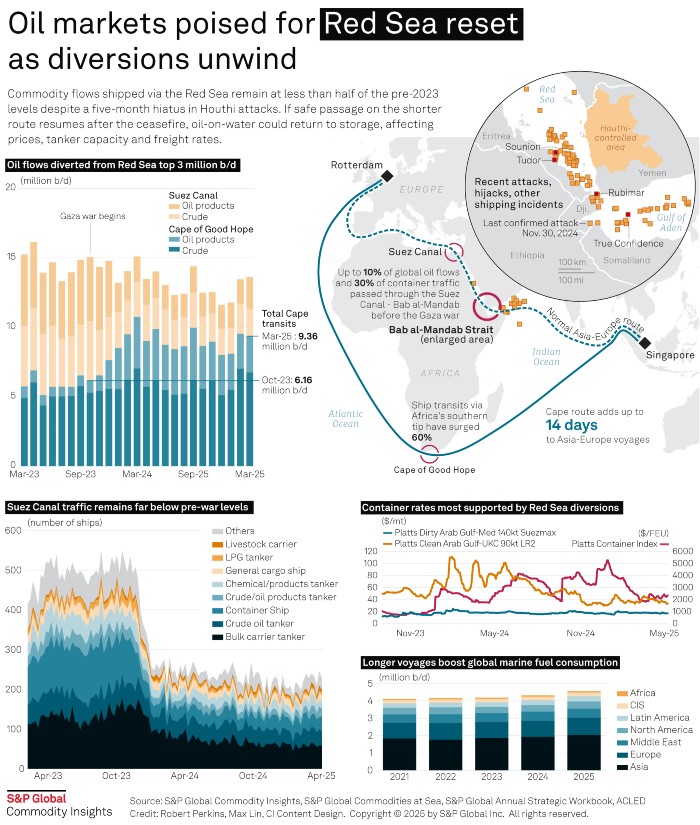- Disruption in Red Sea routes due to Houthi attacks has diverted global oil and container traffic via the Cape of Good Hope.
- Longer shipping routes have increased container freight rates and global marine fuel consumption, leading to widespread economic and environmental impacts on international shipping and energy markets.
The ongoing conflict in the Red Sea is reshaping global shipping routes and commodity trade patterns. As some vessels begin to resume passage through the Suez Canal, European oil product markets may experience increased pressure due to a potential rise in supply flows, based on the report from S&P Global.
Impact of Red Sea Disruptions on Global Oil and Shipping Routes
The ongoing Houthi attacks and maritime insecurity in the Red Sea have led to a major disruption in global oil and shipping traffic. The critical Suez Canal-Bab al-Mandab route, which previously handled up to 10% of global oil and 30% of container flows, has seen a sharp decline in usage since the Gaza war began in October 2023. As a result, oil and cargo ships have increasingly diverted via the Cape of Good Hope, significantly extending travel times—by as much as 14 days for Asia-Europe voyages.
This has caused a 60% surge in ship traffic along Africa’s southern tip, with oil flows diverted from the Red Sea exceeding 3 million barrels per day by March 2025, up from 6.16 million b/d in October 2023 to 9.36 million b/d. The Suez Canal’s traffic has dropped sharply, with reduced movements of crude oil tankers, container ships, and other cargo vessels. If the situation stabilizes and safe passage resumes, oil currently on water could shift into storage, affecting oil prices, tanker availability, and freight costs globally.
Economic and Environmental Consequences of Shipping Reroutes
The longer voyages caused by the Red Sea diversions have significantly influenced global shipping economics. Freight and container rates have soared, particularly on key routes like the Dirty Arab Gulf-Mediterranean and Clean Arab Gulf-UKC lanes. Container shipping prices per FEU have also risen due to longer distances, tighter vessel availability, and increased operational costs.
At the same time, these extended routes have boosted global marine fuel consumption. From 2023 to 2025, marine fuel demand rose across all regions, most notably in Asia, Europe, and the Middle East, highlighting both economic and environmental implications. The ongoing disruptions underline how geopolitical conflicts in a critical maritime region can ripple through global trade networks, energy markets, and environmental systems.
Click here to view full-size infographic
Did you subscribe to our Daily newsletter?
It’s Free! Click here to Subscribe!
Source: S&P Global


















